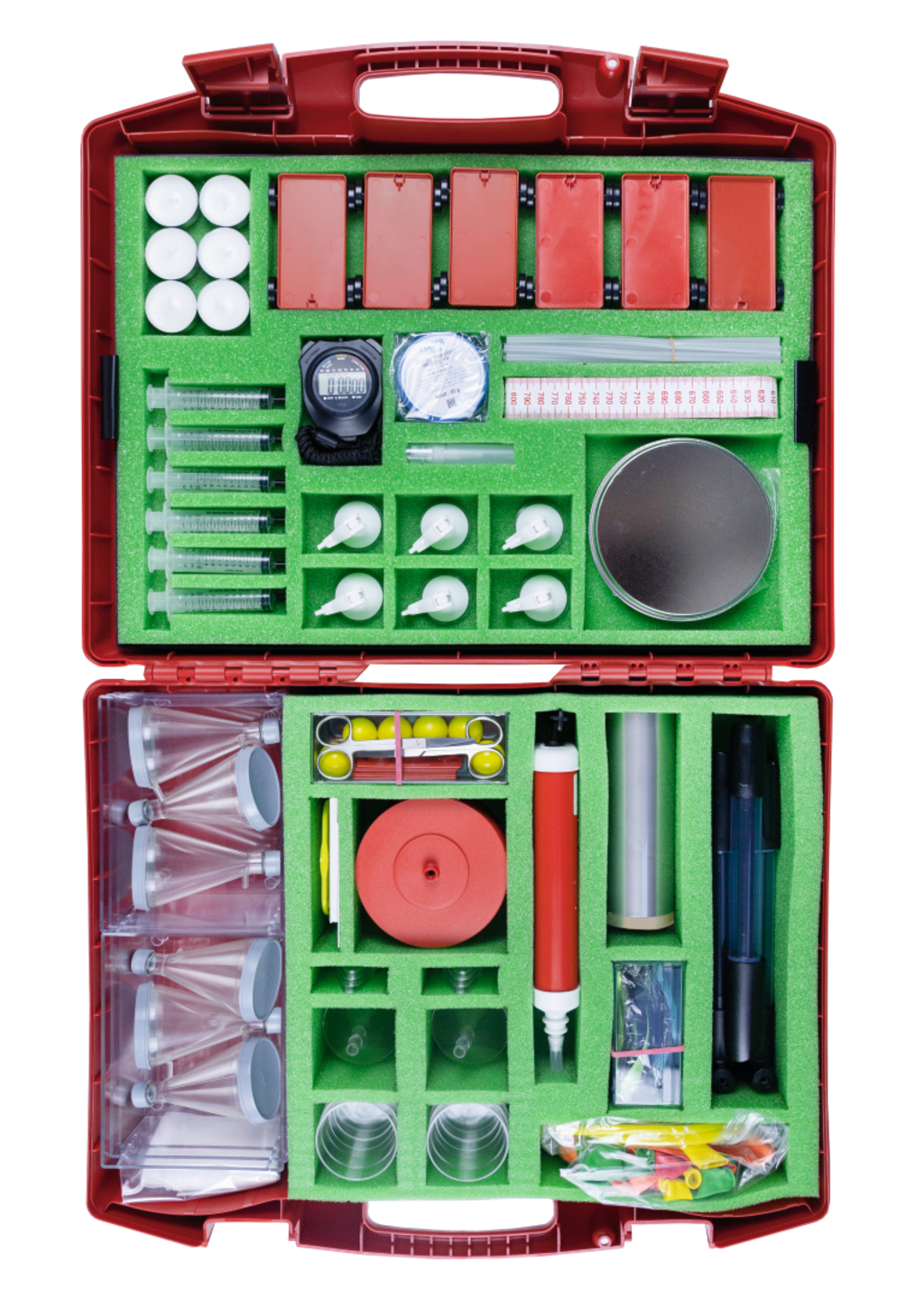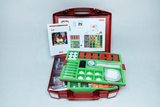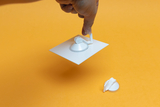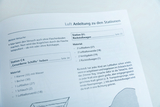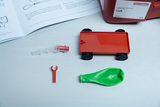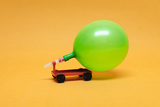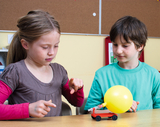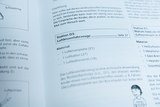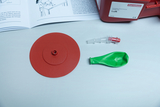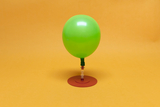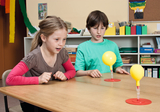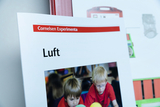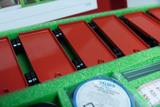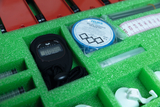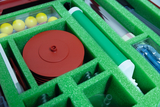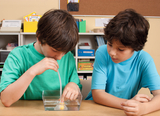Students kit Air – Gases around us
We constantly breathe air in and out. Air pressure weighs down on all of us. But as it is mostly invisible children often think that air is “nothing”.
The experiments allow the children to learn about the properties of air and to understand that air is concrete and tangible.
The kit also provides demonstration material for spectacular experiments for the teacher.
Teacher’s manual ‘Experiments in workstations: Experimenting with air’
With copy templates covering 31 workstations.
Age 6-10
Materials for up to 31 workstations (for 31 children at least)
Technical specifications
Size of kit: 540 x 450 x 150 mm
The children get to know different valves and their functions.
We will shortly provide you with a description of the experiment at this point.
We will shortly provide you with a description of the experiment at this point.
We will shortly provide you with a description of the experiment at this point.
One child presses two cups tightly against the balloon, which the other inflates. When inflated, the cups hold up by themselves because the air pressure inside them has been reduced compared to the outside pressure. So the physical phenomenon is similar to that of the suction cup.
The children get to the bottom of the secret of the floating ball.
With a tub and a balloon, the children observe how sunken ships can be lifted.
Every child has already experienced recoil on a balloon when it zigzags through the room when it is inflated and released. The reason for this is the fact that every force has an equal but oppositely directed force. With the recoil carriage, the force is directed in one direction.
We will shortly provide you with a description of the experiment at this point.
The children are encouraged by the texts to set up “dirt traps” everywhere, which basically consist of sticky tape that is placed everywhere with the sticky side up and examined with a magnifying glass after a few days.
The children examine the air in a balloon.
This station draws children's attention to the body's constant intake (and release) of air. They should recognize that we constantly have to breathe air and that we can only live for a few minutes without air or oxygen.
In addition to the learning outcome, the children recognize that the water is rising and the candle is going out. She used up some of the air in the cup. The fact that the water rises in the cup proves this, as does the fact that the flame goes out.
We will shortly provide you with a description of the experiment at this point.
Here the children see that air is a body that leaves no room for another – water – if it cannot escape. You will also learn that this experiment is used in technology: If work has to be done under water, you can use the "diving bell", the principle of which becomes clear in this experiment.
The children examine suction cups and place them on a white plate.
The attempt is only successful if the water is higher than the end of the hose - and if you have created a vacuum there by sucking it in. To do this, put the end of the hose in your mouth and suck until your mouth waters. Now squeeze the hose and hold it in the lower cup.
The children examine the air in a syringe and learn that air is a body.
In this experiment, a simple technical device from everyday life is made transparent by operating the "transparent" air pump in this experiment.
Children place a ball of paper in the neck of a feeding bottle and then blow on the neck of the bottle.
The children build their own small rocket ropeway and consolidate the recoil phenomenon.
The hovercraft is a technical application of the recoil principle.
We will shortly provide you with a description of the experiment at this point.
We will shortly provide you with a description of the experiment at this point.
We will shortly provide you with a description of the experiment at this point.
- 1 × Atomizer
- 2 × Plastic box 140/50/35 mm
- 6 × Screen white, plastic 90x90x1 mm
- 1 × Plastic box 105x90x50 mm
- 6 × Triple lens magnifier
- 2 × Scissors, dissecting, 115 mm
- 1 × String on spool
- 1 × Rocket model ROKIT
- 1 × Foam insert 1 for 31710, 505x355x30 mm
- 1 × Foam insert 2 for 31710, 380x365x105 mm
- 1 × Storing diagram,int.vers.
- 6 × Plastic tube 120x5 mm
- 1 × Stopwatch, digital
- 1 × Tray 510x360x20 mm
- 1 × Plastic case ca.540x450x150 mm
- 6 × Trough, plastic 173 x 132 x 70 mm
- 6 × Suction flask 90 ml
- 6 × Funnel for the suction flask 47563, 60 mm ø
- 6 × Beaker, plastic, 100 ml
- 3 × Air pump with transparentcylinder
- 6 × Propulsion vehicle
- 6 × Air cushion disc
- 2 × Parachute with figure
- 1 × Rubber balloons, 100 pcs.
- 1 × Air pump for balloons
- 1 × Jar of Vaseline, 40 g
- 1 × Heat stack, 150 mm
- 1 × Mini-hot-air balloon ca.40x32 cm, w. manual
- 1 × Esbit burner, nickelplate
- 1 × Dry combustibles ESBIT 20 tablets
- 1 × Metal plate, 150 mmØ
- 1 × Adhesive tape, 10mx19mm
- 1 × Tape measure 1 m, 10 pcs.
- 6 ×
- 2 ×
- 6 ×
- 6 ×
- 6 ×
- 12 ×
- 6 ×
- 6 ×
- 6 ×
- 6 ×
- 6 ×
